Overview of the egg's nutritional benefits and the best cooking methods to preserve its nutrients.
Nutritional Information of an Egg: Different Cooking Styles
Eggs are essential in the kitchen and are renowned for their exceptional nutritional properties. They are a high quality food and a true nutritional treasure for a balanced diet. A complete source of proteins, they contain all the essential amino acids that the human body needs. What’s more, egg proteins are considered particularly beneficial as they are easily assimilated and used by our body.
As well as their high protein content, eggs are an excellent source of vitamins and minerals. In addition to vitamins A, D, E, they contain those of the B complex, as well as minerals such as phosphorus, selenium and zinc. Egg yolk is rich in cholesterol, which, although controversial, is required for the proper functioning of the body in moderate amounts.
Eggs are also an important source of essential fatty acids, particularly omega-3 and omega-6, which play a crucial role in cardiovascular health, brain function, and in reducing inflammation. In fact, the so-called "enriched with omega-3" or "Columbus" eggs come from hens fed with flax seeds, which increases their omega-3 content.
In brief, the egg is a nutritious and balanced food, providing a wide variety of essential nutrients to our body... provided that one knows how to prepare it! And thus, what is the best way to cook an egg? The following should be taken into account:
- Ensuring the optimal digestibility of proteins
- Minimising the presence of anti-nutrients (anti-proteases, avidin...)
- Preserving micronutrients as much as possible
- Restrict the formation of potentially harmful molecules
Anatomy of an egg
An egg is divided into a number of distinct parts: shell, shell membrane, egg white (albumen), egg yolk and chalazae. Let's take a closer look at egg white and egg yolk.

Egg albumen - egg white
Made up of 90% water and 10% protein, it's a source of nutrients for the developing embryo. It also contains many anti-nutrients.
Ovomucoid, ovoinhibitor, ovomacroglobulin (ovostatin) or cystatin are molecules regulating the activity of proteases (enzymes that allow us to digest proteins) and are present in large quantities in egg whites. Indeed, their role in the development of the embryo and in the antimicrobial processes of the egg is very little known. In relation to the human diet, on the other hand, these molecules have a notorious effect that limits the digestibility of the egg consumed raw. In brief, egg white proteins are more digestible after cooking.
Egg white contains avidin, an anti-nutrient that binds to biotin (vitamin B8), making it unassimilable. Biotin deficiency was first highlighted among bodybuilders, who used to eat lots of raw egg whites. This deficiency, called 'egg white injury', simply refers to vitamin B8 deficiency, taking into account any potential causes. Despite experiencing a loss of its properties when heated, avidin is quite resistant: according to research, it is estimated that its residual activity in poached, boiled and fried eggs is at 71%, 40% and 33%, respectively. Therefore, a deficiency, even temporary, of biotin is not to be excluded in people consuming a lot of whites, even cooked, and throwing away the yolks, or using egg whites in powder for any kind of 'healthy recipes'. Thus, the white should be cooked as best as possible, and it is best to avoid consuming the white without the yellow, since the latter contains enough biotin to neutralise the residual action of the avidin after cooking the white.

So, by cooking the white as well as possible, one acts on two levels: on the one hand, the digestibility and the assimilation of proteins is improved, notably through the deactivation of anti-proteases; on the other hand, the activity of avidin is increased, an anti-nutrient which causes a deficiency of vitamin B8 by binding to the latter.
Vitellus - the Egg Yolk
This is rich in lipids, proteins, vitamins and minerals. It nourishes the embryo and provides its characteristic colour to culinary preparations. The yolk is the most nutritious part of the egg. It's where all the vitamins, minerals and antioxidants are concentrated. Moreover, it contains high-quality proteins complementing those of the white, as well as essential fatty acids, omega-6 and omega-3, whose composition varies according to the diet of the hen. Here, heat may have harmful effects.
-
The Fragility of Vitamins and Antioxidants
Many vitamins and antioxidants are sensitive to heat, light and oxygen. Those present in the egg yolk are no exception. Such as Vitamin A, which can lose between 17% and 20% of its activity after cooking. Similarly, Vitamin E loses between 19.5% and 22% of its activity. Carotenoids, including lutein and zeaxanthin, are not spared and can lose up to 20% of their activity ( 18% for xanthophylls). The ORAC score (the antioxidant potential of the egg) has also been the subject of studies, showing the negative impacts of cooking. The less we cook the yellow, the more its micronutrients and its antioxidant capacity is preserved. Moreover, if cooking has an effect on these nutrients, this is also true with regard to preservation. Therefore, you should eat your eggs while as fresh as possible, and not wait too long to consume them, even if, as long as you comply with the deadlines, there is no health risk as long as you meet the expiry date.
Essential fatty acids are related to potential oxidation. Indeed, omega-6s and omega-3s are particularly sensitive to heat, and when they oxidise, they produce particularly harmful peroxide compounds. This is particularly true of so-called 'omega-3' eggs, such as the 'bleu blanc coeur' ones produced in France, since omega-3s are very sensitive fatty acids. In the same way, the cholesterol contained in eggs can oxidise as a result of the heat and give rise to oxysterol molecules, which can have cytotoxic (i.e., dangerous for cells) and inflammatory properties. Once again, it's better not to cook the yellow and leave it runny. The oxidation of fatty acids is significant once the yellow reaches 60°C, but like any other oxidation, it depends on both the temperature and the cooking time.
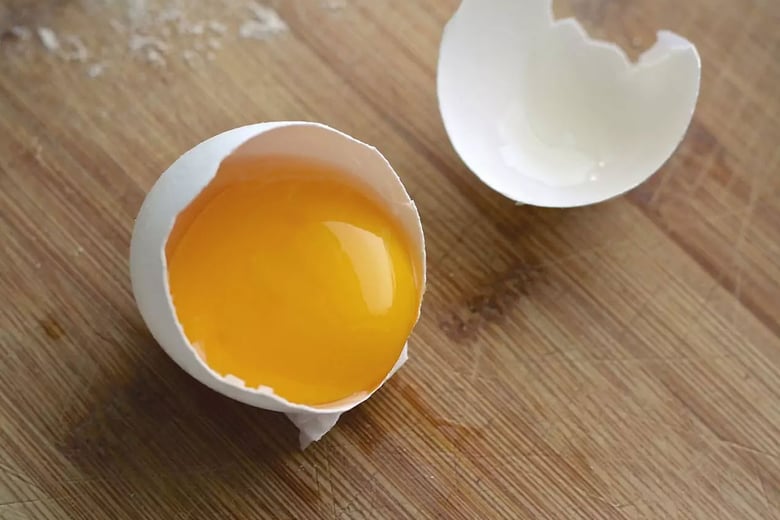
When it comes to the yolk, the opposite is true. By leaving it runny (i.e., raw, as when it is cooked it coagulates), we encourage the preservation of micronutrients and the stability of lipids. Not only Retinol (vitamin A), vitamin E, carotenoids are preserved, but also the overall antioxidant capacity of the egg, while avoiding the oxidation of essential fatty acids and the formation of oxysterol.

What's inside an egg? - functional properties and development during cooking
Functional properties of egg white
This makes it possible to see the colour of other foods through it, providing an interesting visual effect to some dishes. This transparency is maintained up to 58 °C, beyond which the albumin coagulates, modifying the perception of colours. This is a phenomenon that can also be observed in meat changing colour during cooking. The nutrient content of the egg, rich in protein, essential fatty acids, vitamins and minerals, varies depending on the temperature and cooking time. Cooking induces an alteration in egg proteins, leading to the expulsion of water from the egg. Below 57°C, proteins are not altered. Therefore, the residual nutrient content depends on many parameters, including the type of food, cooking time and temperature.
-
Egg binding characteristics
Egg white can serve as a 'cement' to bind numerous proteins together, thus avoiding the use of transglutaminase, a processing agent present in surimi and vegan prepared dishes, which might cause allergies and promote the development of bacteria. Extensive studies are needed to determine the extent of the above.
Egg white has a foaming power which decreases with temperature and ceases to exist above 58 °C. This property is particularly used in making soufflés.
Functional Properties of Egg Yolk
This can be exploited to make sauces, such as mayonnaise. Community kitchens are required to use pasteurised eggs. However, Bruno Goussault has shown that you can make an emulsified sauce using a cooked egg yolk, such as in the sauce gribiche, providing community chefs with additional options.
Different Ways to Cook an Egg and their Impact on its Functional Properties
Cooked in boiling water for about 3-4 minutes, the à la coque egg has a partially cooked egg white, while the egg yolk remains liquid. The transparency of the white is partially preserved, while the other properties are minimally affected.
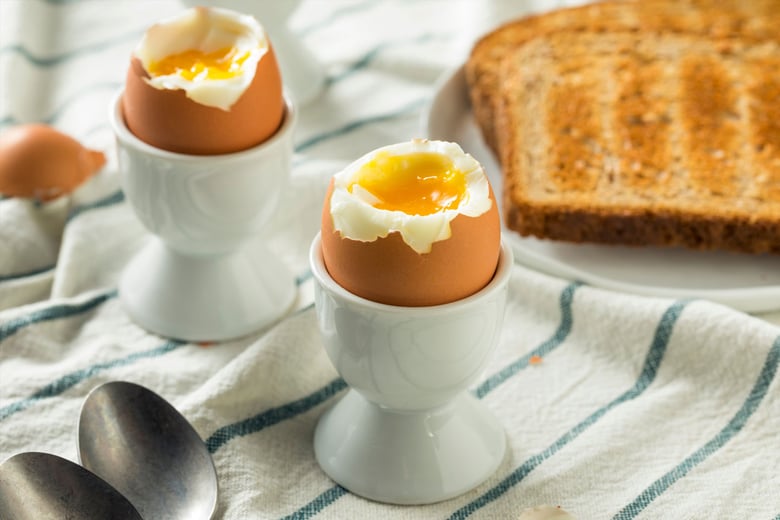
Cooked in boiling water for 6-7 minutes, in the soft-boiled egg the egg white is fully cooked while the yolk is slightly runny. The transparency of the white disappears, while the other properties are altered, depending on the cooking.
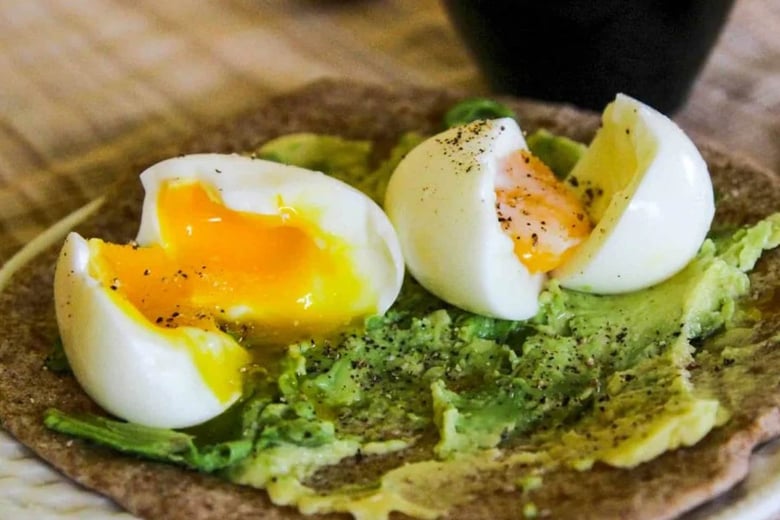
Poached in simmering water with vinegar, the egg is cooked for 3-4 minutes. The egg white is cooked while the yolk remains runny. The transparency of the white is lost, and the other functional properties are slightly impacted.

Cooked in boiling water for 9-10 minutes, the hard-boiled egg has a fully cooked egg white and yolk. The transparency of the white disappears and the other functional properties are considerably reduced.

Cooked on a hot surface with a little fat, the fried egg has a cooked egg white and a partially cooked egg yolk. The transparency of the white is lost, while the other functional properties are altered, depending on the cooking.
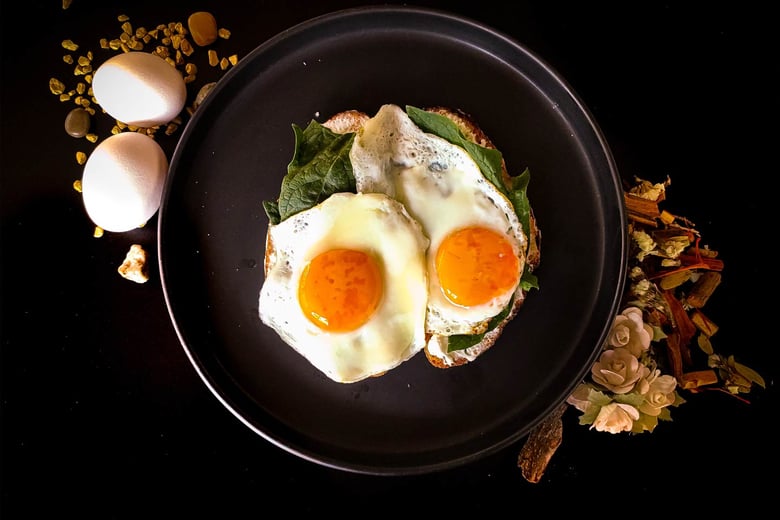
Placed in a ramekin and baked for about 15 minutes, the baked egg has a cooked egg white and a partially cooked yolk. The transparency of the white is lost, while the other functional properties are altered, depending on the cooking.
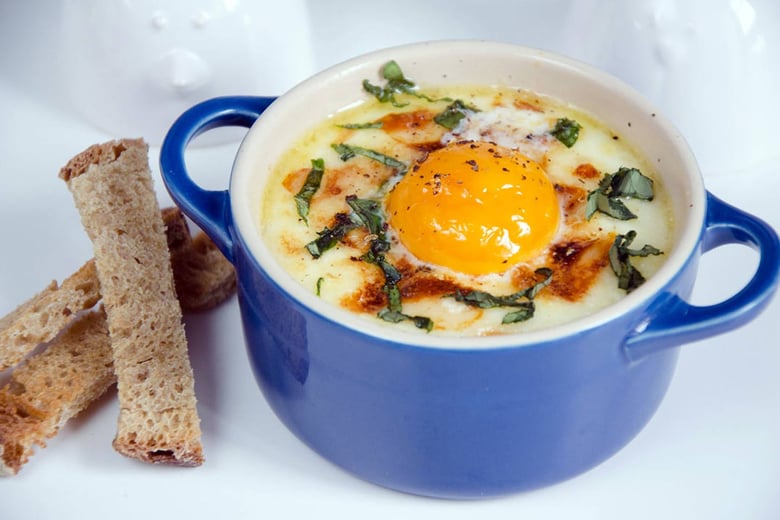
Broken in a bowl and microwaved for about 1-2 minutes, the microwaved egg has a fully cooked egg white and yolk. The transparency of the white disappears and the other functional properties are considerably reduced.
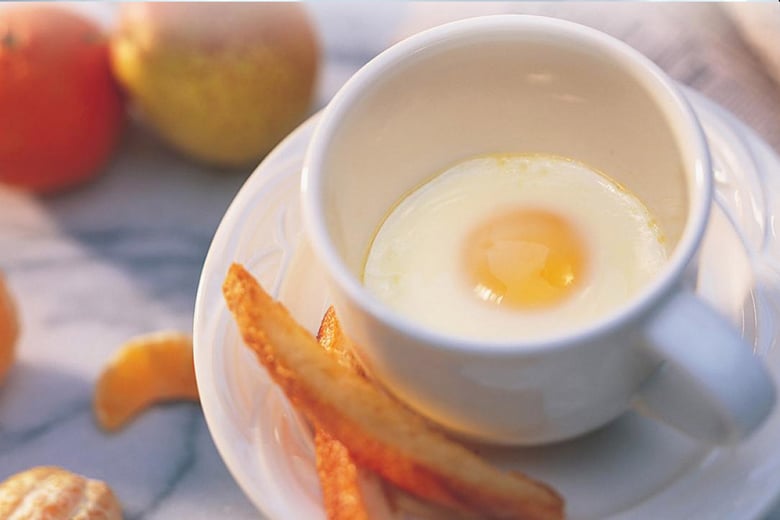
Steamed for about 8-10 minutes, the steamed egg has a cooked egg white and a partially cooked yolk. The transparency of the white is lost, while the other functional properties are altered, depending on the cooking.
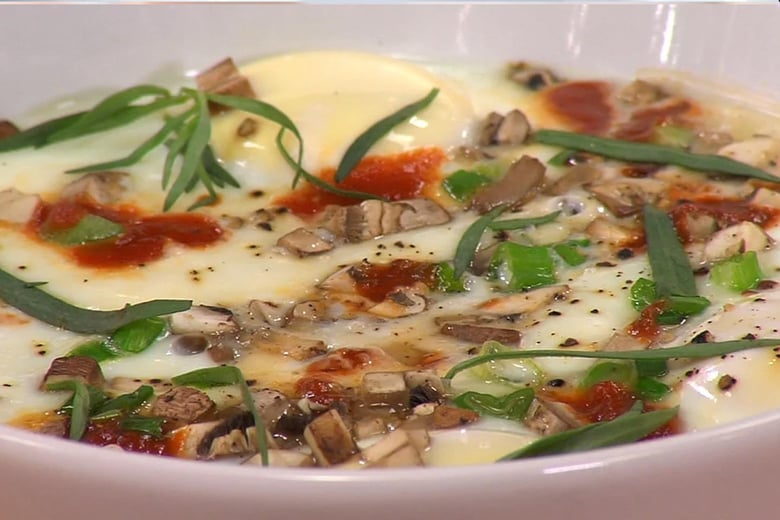
It is prepared by beating the eggs in a bowl and then cooking them in a frying pan with a small amount of butter or oil. By cooking them over low to medium heat, the eggs mix and form a creamy, lightly cooked texture. The goal is to obtain fluffy scrambled eggs based on a homogeneous mixture of egg white and egg yolk. The cooking process of scrambled eggs preserves the bright yellow colour of the egg yolk while ensuring a smooth and delicious texture. The transparency of the white is lost, while the other functional properties are altered, depending on the cooking.
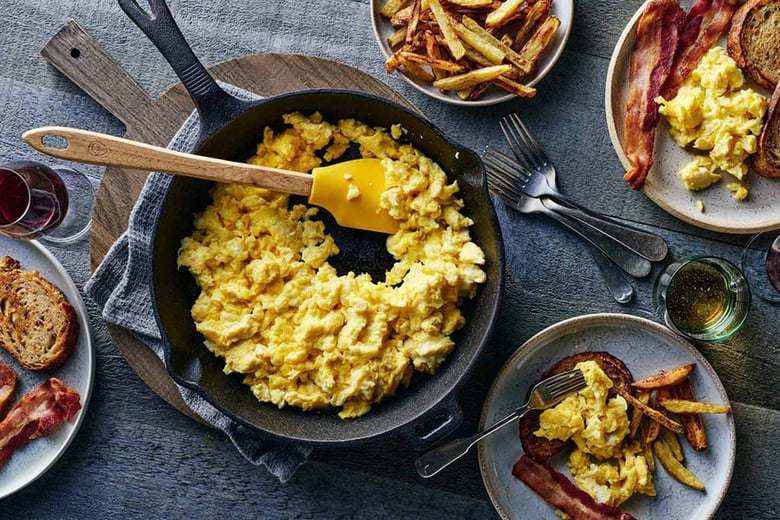
The oeuf parfait is cooked ‘sous vide’ at a precise and monitored temperature in order to obtain a creamy and uniform texture for both the egg white and yolk. This is a technique used in sous vide cooking. The egg is usually slow cooked at a temperature of about 64 °C for an extended period of time, usually between one and two hours. The oeuf parfait has a delicate and silky texture, with tender egg-white and creamy yolk. The precise and monitored cooking allows the preservation of the functional properties of the egg, as well as of its nutrient content. This cooking method is often used in professional kitchens to achieve the perfect texture for the egg.

Risk of bacterial contamination
Eggs are delicate foods that require careful handling. Like any product of animal origin (this is also actually true for products of plant origin), they are not immune to bacteriological contamination. The most well-known and relatively common is salmonella contamination.
Preservation of eggs
The most common contamination occurs through the shell, as this is where salmonella is predominantly present. That is why it's important to keep eggs in a dry and well-ventilated place, avoiding the accumulation of water on the surface of the shell. If you keep your eggs in the refrigerator, it is best to use them immediately after taking them out, to prevent condensation and its effect on the shell. In fact, the shell of the egg does not generally tolerate well any sudden changes in temperature, nor the accumulation of water on its surface.
This is an additional reason why it is better to cook egg whites: by cooking the whites, you already partially reduce the risk of contamination from the shell to the white, which can occur when you break the egg.
You could also pasteurise the shell by immersing the eggs in almost boiling water at 95 ° C for 10 seconds. However, in this case, the shell will lose its protective role and the egg should be used immediately.
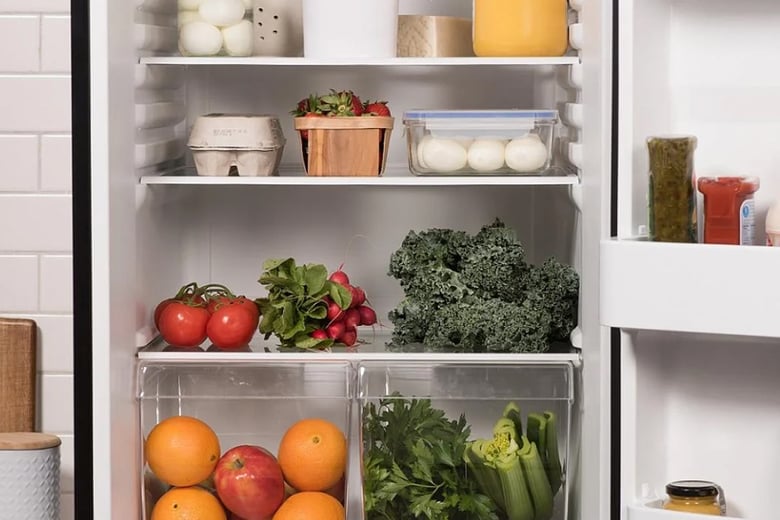
Immersion heater to the rescue for the egg yolk
In rare cases, the yolk may be contaminated. However, this can only occur at the time of the formation of the egg itself. In order to be sure and minimise the risk, it is advisable to pasteurise the entire egg. A lot of research has gone into trying to identify pasteurisation techniques that can preserve the appearance and nutrients of eggs. The most reliable method requires an immersion heater (or, failing that, a kitchen thermometer), and consists in poaching the entire eggs at a temperature of 57 ° C. for a period of 25 min.
Other studies have also tested baths at 57 ° C for a duration of up to 1 hour or even an hour and a half (to eliminate even more bacterial strains), without altering the texture, nutritional quality or taste of the egg. However, immersion at 57 ° C for an hour is often recommended.
Finally, it is essential to opt for quality eggs. To reduce the risk, it is always advisable to choose eggs that are organic or that come from hens raised outdoors. Contamination is much more frequent and likely in the case of eggs from hens raised in enclosed spaces, whether on the ground or in cages.
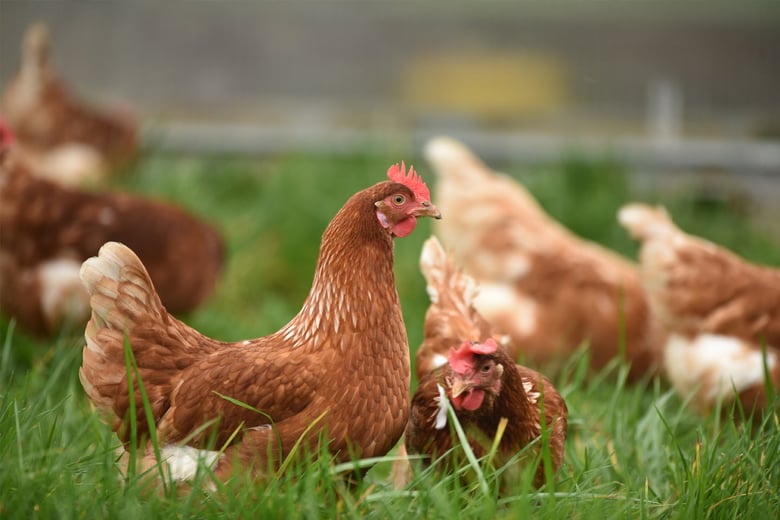
How to cook an egg: an essential skill in cuisine
Eggs are an essential ingredient in cuisine due to their many functional properties. To optimise these properties and produce a variety of delicious culinary results based on optimal texture and nutrient content, it is important to master cooking at the right temperature and sous vide cooking. In theory, it is essential for both chefs and enthusiasts to understand the composition of the egg and the impact of different cooking methods on nutrients, in order to get the most out of this versatile ingredient.
Basically, the best combination is the following: a well cooked egg white and a runny yolk. For example, you can opt for à la coque eggs, which also reduce the risk of bacterial contamination present on the shell, or fried eggs with a runny yolk. In the latter case, you can also clarify the eggs by separating the whites from the yolks (ideally, having previously pasteurised the shell). After cooking the white in a frying pan, avoiding too high temperatures, you pour the raw yellow over the white and let it sit for a few minutes so that it sticks to the white.
To avoid overcooking the yellow, it is important to note that coagulation begins at about 68 °C and lipid peroxidation becomes significant from 60 °C (but then increases with the temperature rising). The more the yellow is coagulated and thickened, the more there will be oxidation of lipids. However, if you avoid consuming egg yolks with grainy texture, a sour aroma or even a green hue, which are signs of overcooking, on a daily basis, there is no reason to worry.
